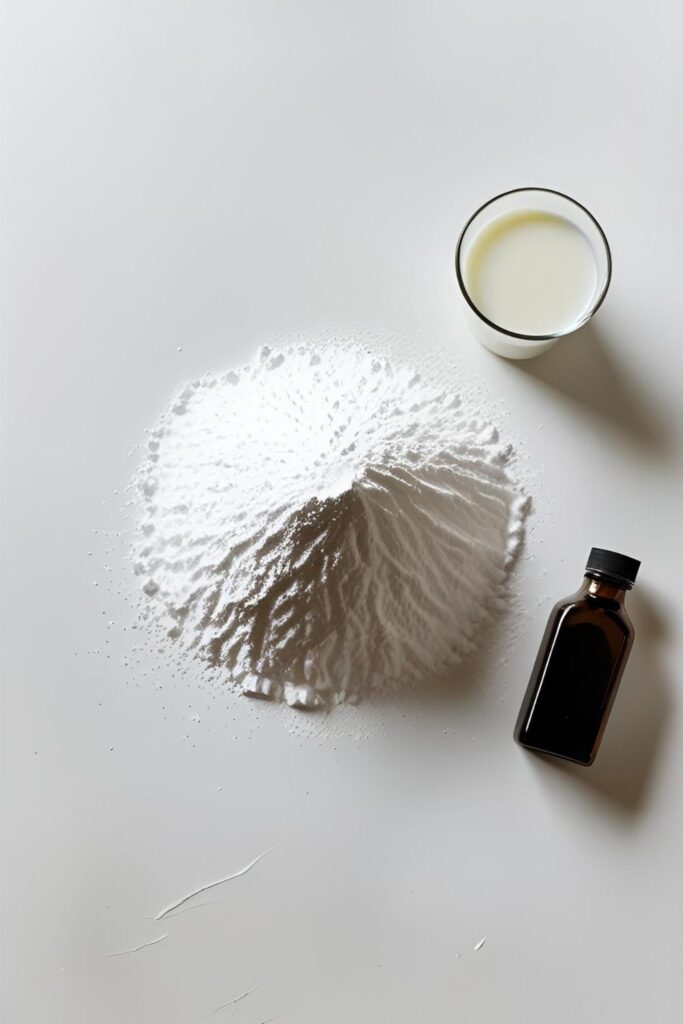How to Make Icing in 2 Minutes (The Easiest Recipe Ever!)
Let’s clear the air. Frosting. Glaze. Icing. What’s the deal? Are they all the same? Not exactly. But if you’re here because you want to know how to make icing—the simple, elegant, pourable, or spreadable kind that turns a plain sugar cookie into a work of art or gives a cinnamon roll its glorious crown—then you have come to the right place.
Forget the intimidating, butter-laden frostings for a moment. This is your new back-pocket secret weapon. This is the “Oh crap, I forgot to decorate these,” “I have exactly three minutes before people arrive,” “I just need a little something extra” recipe. It’s the easiest, most versatile finishing touch in the entire baking universe.
So, are you ready to master the art of the perfect drizzle, dip, and spread? Let’s get you covered.
Why This Recipe is Awesome
In a world of complex baking projects, this simple icing is a breath of fresh air. Here’s why it rocks.
- It’s Unbelievably Fast and Easy: I am not exaggerating when I say this takes two minutes. Do you own a bowl and something to stir with? Can you measure two, maybe three, ingredients? Congratulations, you have all the prerequisite skills to make this icing.
- The Perfect Finishing Touch: Sometimes, a big, fluffy pile of buttercream is just too much. This simple icing adds the perfect touch of sweetness and a beautiful, often translucent, finish that sets firm. It enhances your baked good; it doesn’t overpower it.
- Infinitely Adaptable: This recipe is less of a strict rulebook and more of a guiding principle. You can change the consistency from a thin, crackly glaze to a thicker, spreadable icing with almost zero effort. You are the master of your icing destiny.
Ingredients
The ingredient list is so short and simple, you probably have everything you need right now.
- 2 cups powdered sugar (also called confectioners’ sugar or icing sugar), sifted
- 3-4 tablespoons milk (or another liquid of your choice, like water or lemon juice)
- 1 teaspoon pure vanilla extract
- Pinch of salt
Tools & Kitchen Gadgets Used
Prepare to be underwhelmed. This is the definition of low-tech.
- A Medium Mixing Bowl
- A Whisk (or a fork, if you’re feeling particularly minimalist)
- A Sifter or Fine-Mesh Sieve (The secret to lump-free icing!)
- Measuring Cups and Spoons
Step-by-Step Instructions
Blink and you might miss it. This is quite possibly the easiest recipe you will ever make.
Step 1: Sift Your Sugar (The Non-Negotiable Step) Place your sifter or fine-mesh sieve over your mixing bowl. Pour the powdered sugar in and sift it into the bowl. Yes, all of it. This breaks up all the little clumps and lumps, which is the one and only secret to getting a perfectly smooth, silky icing. Do not skip this. I will know if you do.
Step 2: Add the Liquids and Flavor Add the vanilla extract, the pinch of salt, and start with 3 tablespoons of the milk. It is crucial that you hold back a little of the liquid. You can always add more, but you can’t easily take it away.
Step 3: Whisk It Good Now, grab your whisk and mix everything together. At first, it might seem really thick, like a paste. Keep whisking! It will come together into a smooth, opaque icing. Make sure you scrape the bottom and sides of the bowl to get everything incorporated.
Step 4: Become the Artist (Adjust Consistency) This is where you take control. Is your icing too thick to drizzle? Add the last tablespoon of milk, or even just a teaspoon at a time, whisking after each addition, until it reaches the perfect consistency. Is it too thin? Add more sifted powdered sugar, a tablespoon at a time, until it thickens up. You’re looking for a consistency like honey or corn syrup for drizzling, or like smooth peanut butter for spreading. That’s it. You’re done. You made icing.
Calories & Nutritional Info
It’s essentially sugar in a liquid form. Let’s just own it.
- Serving Size: 1 tablespoon
- Estimated Calories: Around 60-70 kcal.
- Contains: Pure, unadulterated sugar.
- Perfect For: Making delicious things even more delicious. This is a valid nutritional goal.
Common Mistakes to Avoid
This recipe is simple, but there are a few ways to veer off course. Let’s keep you on the path to success.
- Refusing to Sift the Sugar: I will die on this hill. If you just dump the powdered sugar in from the bag, you will have lumpy icing. You will whisk until your arm falls off, and you will still have lumpy icing. Lumpy icing is sad icing. Sift your sugar.
- Adding All the Liquid at Once: You will go from a thick paste to a watery, translucent mess in a heartbeat. It’s so much easier to thin an icing out than it is to thicken it back up. Always start with less liquid and add more, drop by drop, until you reach that perfect consistency.
- Forgetting the Salt: I know it sounds counterintuitive to add salt to something so sweet, but trust me. That tiny pinch of salt is the magic ingredient that balances the flavor and keeps it from tasting like a one-note sugar bomb. It makes the vanilla or other flavorings pop. Don’t skip it.
- Using Granulated Sugar: This recipe specifically calls for powdered/confectioners’ sugar. Granulated sugar will not dissolve in the cold liquid and you will end up with a crunchy, sandy, unpleasant sludge.
Variations & Customizations
This basic recipe is your playground. Now go have fun.
- Zesty Citrus Glaze: This is a classic for a reason. Instead of milk, use an equal amount of freshly squeezed lemon, lime, or orange juice. Add a teaspoon of zest for an extra pop of bright, fresh flavor. This is absolutely perfect for drizzling over Bundt cakes, scones, or pound cake.
- Rich Coffee Icing: Who needs a latte when your dessert can have one? Replace the milk with an equal amount of cooled, strong-brewed coffee or espresso. This is ridiculously good on coffee cake, cinnamon rolls, or chocolate donuts.
- A World of Color: This white icing is the perfect blank canvas for color. Add one single drop of gel food coloring and stir to see the color. Add more, drop by drop, to reach your desired shade. This is perfect for decorating holiday sugar cookies.
FAQ Section
All your icing-related inquiries, answered in a flash.
1. What is the difference between icing and frosting? Generally speaking, “icing” is thinner, often made with just powdered sugar and a liquid, and it sets up firm or hard. “Frosting” (like buttercream) is thicker, fluffier, contains fat like butter or cream cheese, and stays soft.
2. How do I make this icing harden? This simple powdered sugar icing will naturally set and form a firm, dry-to-the-touch shell as the water in the liquid evaporates. The thinner the glaze, the more of a “crackly” shell it will have.
3. My icing is too thin! How do I fix it? Easy! Just whisk in more sifted powdered sugar, a tablespoon at a time, until it reaches the thickness you want.
4. My icing is too thick! How do I fix it? Even easier! Add more of your liquid (milk, lemon juice, etc.), a tiny splash at a time (like, ½ a teaspoon), and whisk until it thins out to your desired consistency.
5. Can I make icing without a mixer? Yes! This is the perfect recipe for that. A simple bowl and a whisk or even a fork are all you need to get a perfectly smooth result.
6. How should I use this icing? You can drizzle it over cakes with a spoon, dip the tops of cookies or donuts into it, or use a small offset spatula to spread a thin, even layer.
7. How long does this icing last? It’s best used immediately, as it will start to form a crust. If you need to store it, place it in an airtight container with a piece of plastic wrap pressed directly onto the surface and keep it at room temperature for up to 2 days. You may need to whisk it again before using.
Final Thoughts
And there you have it. The simplest, most versatile, most useful secret weapon in your entire baking arsenal. You now know how to transform any plain, naked baked good into a beautifully finished dessert in about the time it takes to brew a cup of tea.
You are now an icing expert. Go forth and drizzle, dip, and decorate with the confidence of a pastry chef. The possibilities are endless, and your desserts will never be boring again.




